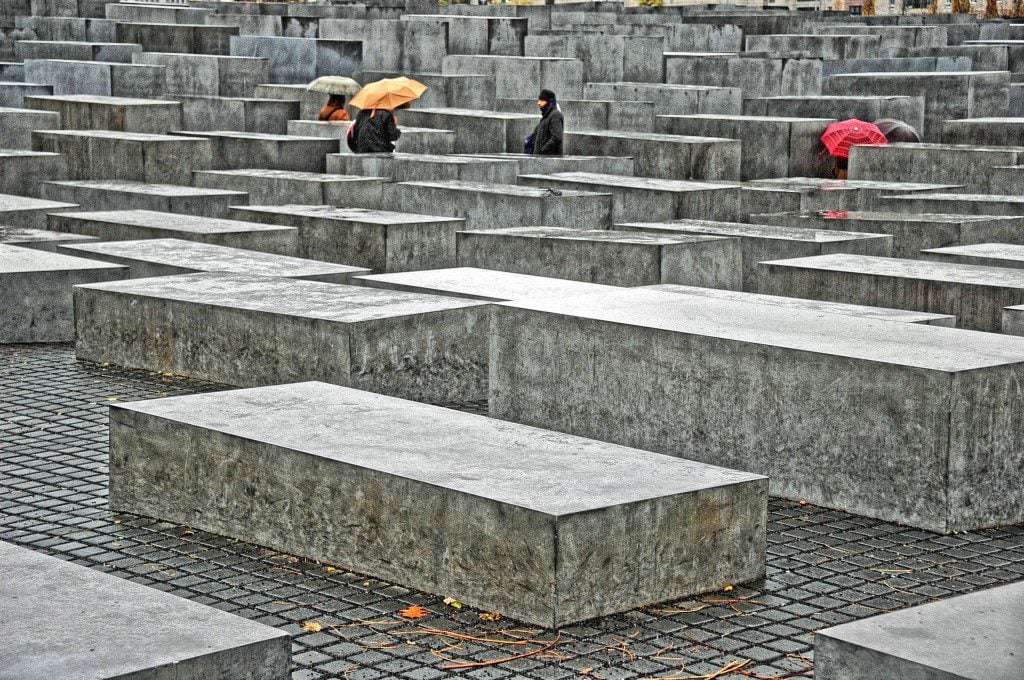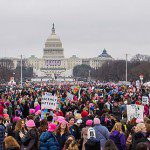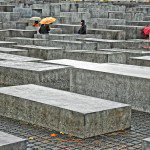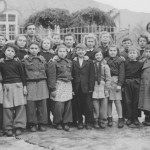
Yesterday was International Holocaust Remembrance Day, which generated a lot of “Trump = Hitler” tweets. And as it happened, I had gotten a new library book, Final Solution; the Fate of the Jews 1933 – 1949, by David Cesarani, a short time ago, and spent some time reading it. This is a very dense book, some 800 pages and full of detail, endless detail, though unfortunately lacking in a timeline to be able to grasp the overall course of events. And while I didn’t read the whole thing, reflecting on what I did read, and what I had previously known, I’ve put together a list of “myths” — or at least things that it seems to me are commonly believed about the Holocaust.
1. Most people died at Auschwitz, where the Nazis “selected” Jews who were capable of working, so that if you were young, you at least had a fighting change of surviving.
Actually, the large majority of Jews died at extermination camps like Sobibor, Belzec, and Treblinka, where you had no chance of surviving at all, or at the hands of the roving death squads called Einsatzgruppen (“Mission Groups”). The Einsatzgruppen are estimated to have killed 1.3 million Jews, in large massacres such as that at Babi Yar and smaller massacres in villages across Poland and the Soviet Union, following the German army’s conquests. An estimated 200 – 250,000 Jews were killed at Sobibor from May 1942 to October 1943. From 430,000 – 600,000 were killed at Belzec from March 1942 to June 1943, and between 700,000 – 900,000 were killed in Treblinka from July 1942 to October 1943. In all three cases the gas chambers used carbon monoxide, not Auschwitz’s Zyklon-B.
In total, 1 in 6 Jews killed in the Holocaust, died at Auschwitz, and, while that’s a tremendous number for a single camp, I guess I find the massacres and the extermination camps more horrifying. Once you disembarked that train, there was no way out.
2. The Nazis used trickery to lure unsuspecting Jews into the gas chambers by telling them that they were going to take showers.
Well, yes and no. I’d read before that there was a great deal of pretense, so that the unsuspecting Jews didn’t know what was going on up until the point when they saw that they were being crowded into the “disinfecting room” or “shower room” so tightly that there was no way this would be an actual shower. Or, rather, that this was the case for Jews coming from the West, who were much less likely to hear reports of what awaited them, and also seems to have been the case for the Hungarians at Auschwitz; for Jews from Poland and the East, who had been trapped in ghettos, there was much more widespread knowledge of their fate, and much more resistance — from efforts to escape the trains themselves, to riots after disembarkation on the platform, to resistance throughout the process.
And the Nazis kept their operation running by brutality — whipping, beating, bayonetting the victims. Men preceded women so that, even after the women heard the men’s shrieks, they were more powerless to fight. The forced nudity, too, added to the panic, and the last step, in the “tube” — the long corridor from the undressing area to the gas chamber — was meant to completely terrorize the victims. In the individual massacres, the forced undressing also had the effect of adding to the panic and inability to think ahead to an escape.
3. The Jews were clueless and didn’t fight back.
The images of Jews standing in line for their turn at the death pits are too close up, and miss the fact that they were surrounded. But even so, there were Jews who tried to escape, who ran to the forest. (I’d cite the page number and even quote but I read this last night and can’t find it now.) Some did succeed, but most were hunted down and killed. And that’s not to mention the partisans, and the famous acts of resistance such as that in the Warsaw Ghetto. But most Jews who attempted to escape found it very difficult to survive on the run or in hiding, and many even surrendered, hungry and exhausted.
4. There was something uniquely pathological about the Germans that caused them to do this.
No, no, and no. Jews in Germany were well-integrated into German society before Hitler came to power. On the other hand, in Poland, Ukraine, Lithuania, Slovakia, and so on, there were no shortage of locals willing to participate in the massacres, turn in their neighbors, help themselves to Jewish property left behind, and so on. To a certain extent, Germans brought about this collaborationist willingness by convincing the locals that the Jews had collaborated with the communists, especially given that the Germans portrayed themselves as liberators, freeing the locals from communist rule. But they certainly took advantage of longstanding antisemitism.
5. The point of studying the Holocaust is to ensure that it never happens again.
OK, this isn’t actually a “myth” in that scholars believe otherwise — I imagine that scholars generally would say exactly this. But we suck at never-again-ness. Dafur, Rwanda, Pol Pot, the Yazidis. We either sit on our thumbs or say “no boots on the ground!” And I think that in-depth study of the Holocaust can risk bringing about the illusion that we can easily stop a “new Holocaust” in its tracks, when we don’t really know how to do this at all. We find some similarity between the Holocaust and a present-day situation and cry out that so-and-so is as bad as Hitler, or we watch killings happen but say it’s not our business, or we’d only make the situation worse if we intervened.
To me, the point of studying the Holocaust is to learn more about humanity. What are humans capable of in these most extreme conditions? How far can a will to survive carry someone in the face of overwhelming odds? How readily can you quash the will to resist? What moves one person to save lives at great cost, and another to take lives for personal gain? And how was it that the Nazi killing machine was able to take men and women, mothers and fathers, daughters and sons, husbands and wives, who wrote touching letters home, and create of them killers and monsters?
It also compels us to reflect on the question, “what would I have done?” Would I have had the strength to resist, to organize? Or as a Gentile, would I have aided or looted the Jews?
Image: The Holocaust Memorial in Berlin; Wikimedia Commons.











